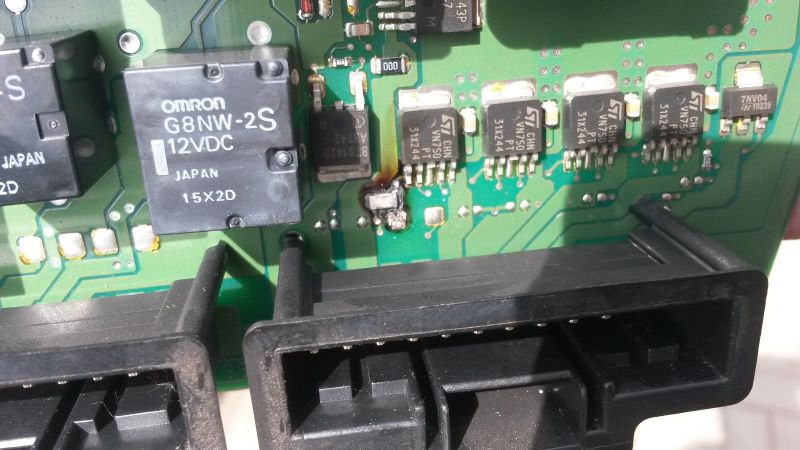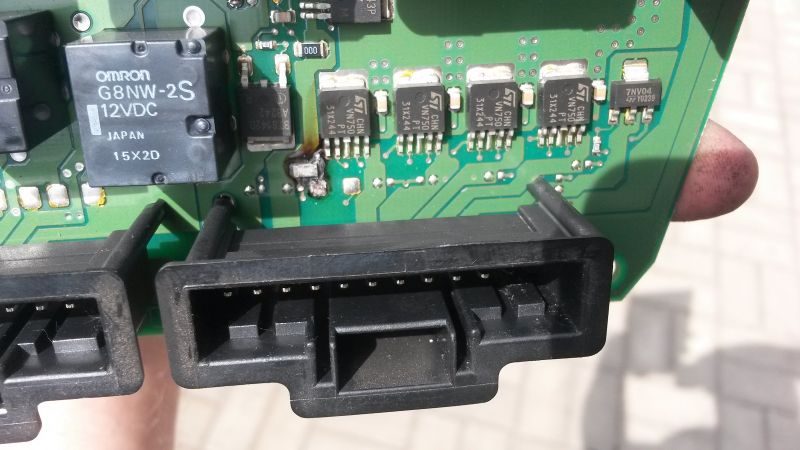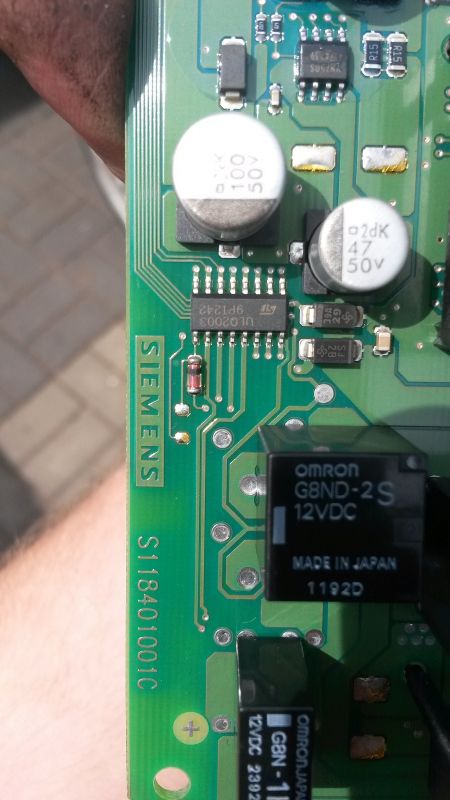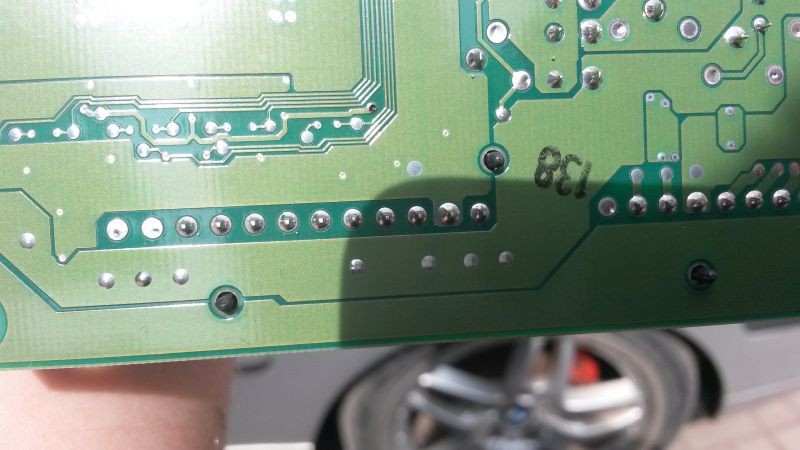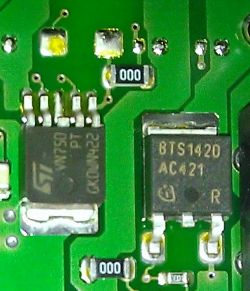FAQ
TL;DR: Megane II boot won’t open and no 12 V at the latch? The UCH often burns a 0Ω, 1206, 250 mW link; replace it. "An ordinary 0Ω 'jumper' is mounted here." [Elektroda, piskala, post #17459465]
Why it matters: This FAQ helps Renault Megane II owners and techs quickly diagnose and fix a dead boot lock and rear washer without guesswork.
Quick Facts
- Tailgate lock motor pinout: pin 2 ≈12 V from UCH, pin 1 gets ground via handle, pins 3–4 ground when latch open. [Elektroda, milejow, post #17289263]
- The 12 V feed to pin 2 appears only when central locking is open or the trunk is opened via the card. [Elektroda, milejow, post #17290887]
- Typical root cause: burnt 0Ω link near the tailgate output on UCH; replace with 0R, size 1206, 250 mW. [Elektroda, piskala, post #17459465]
- Rear washer power runs directly from the right stalk; burnt contacts can flip polarity yet deliver near-zero current. [Elektroda, milejow, post #17285376]
- New integrated rear handle assembly was quoted at about PLN 650 by an owner. [Elektroda, Frost160, post #17287337]
How do I test the Megane II tailgate lock circuit with a multimeter?
Back-probe the 6-pin lock connector. Measure pin 2 for about 12 V supply from the UCH. Press the handle and check pin 1 goes to ground. Verify pins 3–4 show ground when the latch is in the “open” position. If pin 2 lacks 12 V, trace back to the R2 connector and then the UCH. Use a good chassis ground for reference. Record readings with central locking open if needed later. [Elektroda, milejow, post #17289263]
Does the UCH power the boot lock, or only signal it?
The UCH powers the lock. Pin 2 on the lock receives 12 V from the UCH, and the handle switch provides ground to pin 1 to drive the motor. Pins 3 and 4 relate to the latch status ground. This confirms the UCH is the supply source, not just a logic reporter. [Elektroda, milejow, post #17289263]
Why do I see 0 V on pin 2 after locking the car?
Because the UCH removes the feed when the car is locked. Power to the tailgate circuit returns only after unlocking with the card or pressing the trunk button. As one expert notes, “this power is present only when the central one is open.” Unlock first, then measure. [Elektroda, milejow, post #17290887]
What UCH board failure commonly kills the boot lock feed?
A burnt 0Ω jumper (link resistor) near the tailgate output trace is common. The link opens and the 12 V no longer reaches pin 2. Visual inspection often shows scorching and lifted copper near that component. Repairing the link restores normal operation. [Elektroda, piskala, post #17459465]
How do I repair the UCH when the link is burned? What part do I need?
Replace the burned component with a 0Ω resistor, size 1206, 250 mW, 5% tolerance. Clean and tin the pads, repair any lifted/damaged track with a short wire if needed, then solder the new link. Finish with conformal varnish to protect the area. This restored reliable opening in the documented case. [Elektroda, piskala, post #17459465]
Is it OK to bypass the UCH and feed +12 V from elsewhere?
Avoid permanent bypasses. A prior car had +12 V bridged from another source so it only worked when unlocked. It worked briefly, then failed again within a week. Fix the UCH link and trace instead of band‑aids to avoid repeat faults and safety issues. [Elektroda, arrttuurro, post #17420835]
Where is the R2 connector and why should I check it?
R2 is in the left pillar area and carries the tailgate feed. If pin 2 at the lock shows 0 V, check for 12 V at R2. No voltage at R2 points upstream, likely to the UCH output or board-level link. This narrows the fault efficiently. [Elektroda, Frost160, post #17289425]
My rear washer shows reversed polarity but the pump won’t spin. What’s wrong?
The rear washer feed runs directly through the stalk switch. Burned contacts in the combined switch can flip polarity readings but can’t deliver current, so the test lamp stays dark and the motor doesn’t run. Replace or refurbish the stalk to restore rear wash. [Elektroda, milejow, post #17285376]
The scan tool says the UCH “sends an impulse,” yet the lock won’t open. What next?
The logic layer sees and commands the request, but the physical output path is open. Check 12 V at pin 2. If absent, inspect the UCH board for a burned link and damaged trace. Repair that hardware fault before replacing the lock. [Elektroda, Frost160, post #17286056]
Can I confirm the handle switch without removing it?
Yes. Use a scan tool (e.g., CLIP) to view the tailgate switch status. Press the handle and confirm the status toggles. You can also meter the handle’s ground path at the lock connector while pressing. Both tests confirm the switch works. [Elektroda, Frost160, post #17286056]
What is the exact tailgate lock connector pinout I should know?
Pin 2: 12 V supply from UCH. Pin 1: ground switched by the handle to drive the motor. Pins 3 and 4: ground signals related to latch status when open. Use these references for diagnosis and back‑probing safely. [Elektroda, milejow, post #17289263]
How much does a new integrated rear handle assembly cost?
An owner quoted about PLN 650 for the integrated handle assembly. That price can make repair of the UCH output path more attractive versus replacing the handle. Verify current pricing with your supplier. [Elektroda, Frost160, post #17287337]
Are resistor values different by UCH build year (0Ω vs ~100Ω)?
Field reports mention both ~100Ω and 0Ω parts at that spot. A 2002 UCH documented in the thread had a 0Ω link. Always read markings or measure if intact before ordering, and inspect your specific board version. [Elektroda, piskala, post #17460055]
After repairing the UCH, should I protect the area?
Yes. After replacing the 0Ω link and any track repair, apply a protective varnish (conformal coat). This stabilizes repaired copper and reduces future corrosion or vibration damage. It helped ensure a durable fix in the documented case. [Elektroda, piskala, post #17459465]
What grounds should I see at the lock when checking operation?
With the latch in the open position, you should see ground on pins 3 and 4. When pressing the handle, the button provides ground to pin 1 to energize the motor against the 12 V on pin 2. Confirm each state during testing. [Elektroda, milejow, post #17289263]



